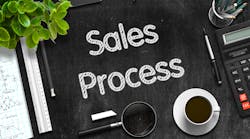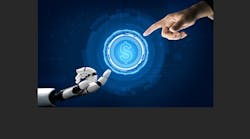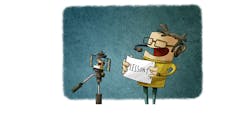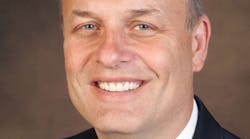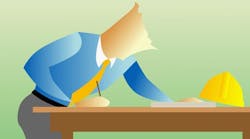After years of success leading dozens of sales teams and hundreds of salespeople, we became frustrated and puzzled that our tried-and-true sales leadership techniques were losing their punch.
We asked ourselves, “Why are our practices not inspiring effective, energized, winning teams as well as before? What was wrong? What changed?”
After a great deal of introspection and analysis, we identified two major changes that were causing our problems — one is socio-economic and one is technical. First of all, more people in the workforce and fewer jobs mean reduced opportunities for rapid career advancement. This leads many of our employees to seek alternate rewards from work, like job satisfaction, learning and “happiness.” Further, our sales teams and our customers are more age, gender, ethnic and language diverse than ever before. Our team at Associated of Los Angeles includes boomers and millennials, men and women. English is a second language for nearly half of our company.
This means traditional sales motivators — competition, money and status — while still important are not important to the same degree for many of the people we lead. Also, we realized we were missing opportunities to provide inspiration and motivation by not adjusting our approach.
Second, from how and how often we communicate to how we measure and monitor ourselves to the very products and services we sell, technology is changing at a pace that is difficult to navigate. This has put salespeople off-balance and unsure of what is expected and how to succeed. It leads to a sense that the job is controlling them instead of the other way around. We were missing opportunities to provide clarity by failing to keep things simple and uncluttered.
We recognized that what needed to change was us. We set out to pursue a fresh approach that would restore order to the job, bridge age, gender, ethnicity and other differences and engender a sense of well-being and happiness. Tall order, right?
Crafting this fresh approach led us to become students of the experience called “Flow.” You may know it as “In the Zone” or “In the Pocket” or being on a “Runner’s High.” It’s the confluence of laser-like focus with extraordinary concentration and passion that enables extraordinary performance in any endeavor, including music, work and sports. We think salespeople can harness the flow, too.
The euphoric sense that follows such states is so gratifying that it drives you to higher and higher levels of performance seeking a return to that Flow State. Scientists have demonstrated direct and significant correlations between Flow States and accelerated rates of learning, as well.
We have all experienced Flow States from time to time, such as when we accomplish more than we thought we could or when our team achieved something that seemed unachievable. It’s an occasional gratifying experience for most of us, but a common experience for musicians and extreme athletes. Steven Kotler, in The Rise of Superman, attributes much of the dramatic advances in athletic achievements in recent decades to Flow. Brain research is helping us understand why this is so, how Flow States are triggered, and the critical role they play in productivity and happiness.
In a major study on the subject from McKinsey, top executives estimate they are five times more productive in Flow. The study finds that some of us reach Flow States as often as 5% of the time in our work and points out that productivity would double if we could increase that figure to 20%. We all work hard to achieve merely incremental gains. Imagine what we could do with a 2X productivity increase from our sales teams. Experiencing more happiness from our work would be welcomed by all of us, right?
Flow States are very real physiological events — they are “perfect storms” of focus, challenge, skills, risk and clarity of purpose that triggers a unique set of brain activities. We know that Flow States cannot be faked or induced artificially and that they cannot be maintained for too long. What leaders can do is create an environment in which the right combination of Flow triggers exist, creating a “Flow-conducive” workplace. Then, we can teach and coach salespeople to appreciate the power and rewards of reaching Flow States routinely.
From The Rise of Superman, by Steven Kotler and Flow, by Mihaly Csikszentmihalyi, we identified five conditions to make a workplace Flow-conducive.
1. Positive attitude. But with insistence on unabashed frankness, honesty and an elevated level of intensity. We use habit-changing practices to provide the emotional intensity.
2. Extraordinary focus. Including clarity about what not to do.
3. Suitable goals. Shared, clear stretch goals matched to skills.
4. Good Communications. An open dialog requiring a common language on all aspects of the job and the skills required as well as frequent, frank discussions with lots of listening to all.
5. No Prima Donnas allowed. Team members must be equally yoked, each member sharing and participating in the program.
We set about creating a flow-conducive environment for our sales team at Associated of Los Angeles to address head-on both the technical and socio-economic changes that we described. The result is our Sales Flow Program. It’s based in twelve weekly face-to-face meetings at which these five critical conditions are pursued and twelve short courses are covered. During the first three weeks we teach about flow, focus and habits.
1. Flow. It’s easy to teach about Flow States because most salespeople have an intuitive sense of it. Course emphasis is on flow-conducive work practices and getting them comfortable with the benefits and the terminology.
2. Focus. We take an extreme approach toward Focus, relying on the old adage that, “If you chase two rabbits you will not catch either one.” Laser-like focus is an essential element for leaders today, as there is just too much data, too many interruptions and way too much work to do. Learning to say “no” and to distinguish good and better from the best use of time is needed. We lean heavily on lessons from The One Thing, by Gary Keller, in which the author endorses radical use of focus to improve effectiveness.
For example, we limit our Keystone Habits (more on this later) to one per quarter and our Territory Plans to one page. We also limit our Sales Project Pipeline to four items. By getting radical with Focus and achieving early successes, confidence and momentum builds and more success follows.
3. Habits. Scientists now estimate that over 95% of what we do each day is habitual. Nothing but public speaking and death (in that order!) make people more uncomfortable than changing a habit. It’s amazing how change-resistant we all are and to what lengths we will go to avoid change. So, we use some best practices of habit-forming to provide the emotional intensity needed for Flow.
For example, everyone agrees that one basic good habit (what we call a Keystone Habit) is that salespeople spend time everyday face-to-face with key customers. Not “often,” not on the phone or by email or text, and not just with any customers. We expect face-to-face meetings everyday with key customers. We know these are also the most demanding and challenging people to see and that there are always plenty of excuses to avoid meeting them so often. This particular Keystone Habit has eluded our team for over a year. We recently developed an app for fast-feedback that should help us make it a habit in 2015 (more on the app in the chapter on Habits a few months from now).
Flow, Focus and Habits form the foundation to our approach in our Sales Flow Program’s courses on Listening, Questioning, Influencing Others, Planning, Sales Pipeline, Personal Productivity, Scripts, Pricing and Impressing. These sales skill courses are very brief and basic and draw on the wisdom of current thought leaders in each area, from the electrical industry and other industries. We repeat our Sales Flow Program each quarter, four times in a year. Repetition is important as often the timeliness of the lesson is as important as the lesson itself. Plus, repetition enables the team to develop a common comfortable language on each subject, making communications easier.
We are impressed with the results-to-date and will share the twelve courses with you in the pages of Electrical Wholesaling in 2015. Podcasts and reprints of the courses will be available from at EW’s website, www.ewweb.com, along with apps, templates and other helpful tools that we have developed along the way. We hope you enjoy reading about what we are doing and that the ideas help you rise to the challenge of leading in new ways to help your team reach higher levels.
Mike Rockwood, executive vice president and general manager, Associated of Los Angeles in Los Angeles and Lou Pontarelli, the company’s sales and marketing manager, are sales veterans with years of experience in the electrical market. You can email Mike at [email protected] and Lou at [email protected].

